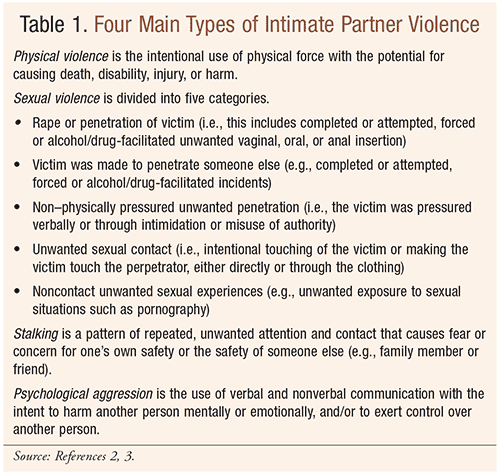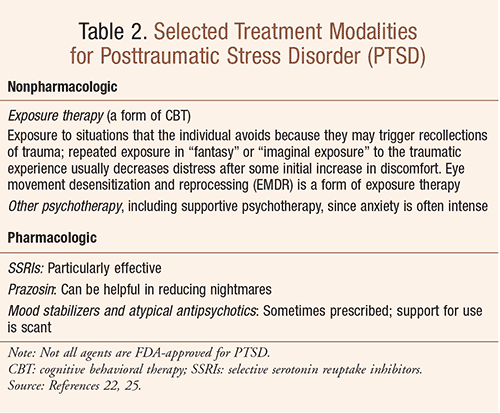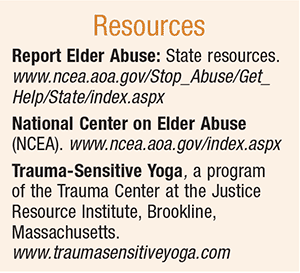USPharm. 2015:40(9)20-23.
A long life encompasses many experiences both positive and negative; traumatic experiences in particular may be associated with long-lasting physical and psychological complications. This column will address intimate partner violence, particularly in women, and the need for awareness on the part of the pharmacist of the nuances of this patient population. Empathy toward patients regarding their traumatic experiences will also be discussed as it relates to the patient-centered approach to healthcare.
Intimate Partner Violence
There is a great burden of interpersonal violence in the United States such that millions of individuals are affected each year. Interpersonal violence includes child abuse and neglect, youth violence, sexual violence, intimate partner violence (IPV), and elder abuse. Healthcare professionals, including pharmacists, need to be aware that violence increases vulnerability to a broad range of physical and mental health problems over the course of a life.1 IPV is a serious and preventable public health problem that affects millions of Americans.2
The term IPV encompasses physical violence, sexual violence, stalking, and psychological aggression (including coercive acts) by a current or former intimate partner; TABLE 1 describes these four types of IPV and the five categories of sexual violence.2,3 IPV is common in the United States, with more than 35% of women reporting that they have experienced rape, physical violence, stalking, or all three, by their significant other in their lifetime, according to the CDC.3

While more than 12 million adults experience IPV annually, only a small percentage of these violent occurrences are reported to healthcare clinicians or law enforcement.1 Women report to the police only 20% of all rapes, 25% of all physical assaults, and 50% of all stalking perpetrated by intimate partners, with the emergency clinician often being the first professional from whom an abused person seeks help.4
As noted above, pharmacists should be aware that violence increases an individual’s vulnerability to a spectrum of mental and physical health problems over the course of a life.1 Physical health problems arising from IPV include chronic pain, neurologic disorders resulting from injuries, gastrointestinal disorders (e.g., irritable bowel syndrome), migraine headaches, and other disabilities.5-7 Further, physical and sexual abuse during a person’s adolescence and young adulthood has been associated with poor self-esteem, alcohol and drug abuse, eating disorders, obesity, risky sexual behaviors, teen pregnancy, depression, anxiety, suicidality, and other conditions.8,9
The effect of intimate partner violence can last a lifetime.2 These scenarios may be particularly poignant in the life of a senior adult who has experienced intimate partner violence at some point. In addition, older adults may be victims of elder abuse, which, according to the CDC, includes sexual abuse or abusive sexual contact. Research studies show that risk factors for elder abuse include dementia, living in a care facility, advanced age, female sex, widowed marital status, physical and mental disabilities, behavioral problems, substance abuse, psychological factors, economic factors, dependency, and social isolation.10-14
Posttraumatic Stress Disorder
Pharmacists should grasp the extent to which women involved in IPV may experience post-traumatic stress. Chronic mental health conditions related to IPV include posttraumatic stress disorder (PTSD), depression, anxiety disorders, substance abuse, and suicide.15-18 The traumatic events most often associated with PTSD for women are rape, sexual molestation, physical attack, being threatened with a weapon, and childhood physical abuse.19 McFarlane et al found that sexual assault is experienced by most physically abused women; further, significantly higher levels of PTSD are associated with sexual assault than are found in women who reported physical abuse only.20 These researchers also found that risk of reassault is decreased if contact is made with health or justice agencies. With regard to violence-prevention strategies, Sumner et al indicate that the most effective include parent and family-focused programs, early childhood education, school-based programs, therapeutic or counseling interventions, and public policy. 1
According to Temple et al, in a study showing differing effects of partner and nonpartner sexual assault on women’s mental health compared to sexual assault by a previous partner or by a nonintimate partner, sexual assault by a current partner was the strongest predictor of PTSD, stress, and the condition known as dissociation.21 Dissociation is a process, or the result of a process, whereby a coordinated set of activities, thoughts, attitudes, or emotions becomes separated from the rest of an individual’s personality and functions independently. The researchers indicated that these findings suggest that the victim-offender relationship is important when considering the impact of sexual assault; sexual assault perpetrated by an intimate partner may be particularly traumatic.
These data are important when pharmacists not only communicate and interact with persons who have experienced or continue to experience intimate partner violence, but also as they elicit social and medical histories for the medical record and formulate pharmacotherapy plans. It has been recommended that tranquilizers or other sedating medications not be prescribed since these agents may impair victims’ ability to flee or to defend themselves.4 Furthermore, patients with a history of physical and psychological abuse often seek to mask feelings with drug and alcohol use that can complicate therapeutic pharmacologic regimens.
Patients need to be provided with the hope that there are ways to provide relief from their distress through nonpharmacologic and pharmacologic management and with the assurance that communication will be approached in an empathetic fashion. TABLE 2 provides a brief overview of treatment modalities for PTSD. If untreated, chronic PTSD often diminishes in severity without disappearing; however, some people remain severely impaired.22

To report IPV in a senior, or for any suspected elder abuse, mistreatment, or neglect, pharmacists can obtain the telephone number in their state (see Resources).
Complementary Approaches
Pharmacists should also be aware of a complementary modality called trauma-sensitive yoga (TSY). This term was coined by David Emerson, E-RYT, an experienced, registered yoga teacher at the Trauma Center at the Justice Resource Institute in Brookline, Massachusetts (see Resources) and the author of two books on the subject.23 He was responsible for curriculum development, supervision, and oversight of the yoga intervention component of the first-of-its kind, National Institutes of Health- funded study conducted by the psychiatrist Bessel van der Kolk to assess the utility and feasibility of yoga for adults with treatment-resistant PTSD. There are TSY groups for rape crisis centers, domestic violence programs, residential programs for youth, military bases, survivors of terrorism, and Veterans Administration centers and clinics.

Empathy: A Component of Patient-Centered Care
At the center of quality healthcare delivery is effective provider‐patient communication and the relationships that it supports.10 Being more sensitive and responsive to the needs of the individual is a key premise in providing effective patient-centered healthcare.24 Therapists and other healthcare professionals, including pharmacists, must be openly empathetic and sympathetic, recognizing and acknowledging a patient’s psychological pain and the reality of the traumatic events.
Conclusion
Regardless of the practice setting, pharmacists are involved in communications with women who have experienced intimate partner violence. As healthcare professionals they should be aware of the psychological and physical implications of these experiences and the understanding and empathetic approach required to deliver appropriate pharmacotherapeutic and patient-centered care.
REFERENCES
1. Sumner SA, Mercy JA, Dahlberg LL, et al. Violence in the United States: status, challenges, and opportunities. JAMA. 2015;314(5):478-488.
2. CDC. Injury Prevention and Control: Division of Violence Prevention. Intimate partner violence (IPV): definitions. Page last reviewed/updated June 19, 2015. www.cdc.gov/violenceprevention/intimatepartnerviolence/definitions.html. Accessed August 21, 2015.
3. Breiding MJ, Basile KC, Smith SG, et al. Intimate partner violence surveillance: uniform definitions and recommended data elements, version 2.0. Atlanta, GA: CDC. Injury Prevention and Control: Division of Violence Prevention; 2015. Page last reviewed/updated May 28, 2015. www.cdc.gov/violenceprevention/pub/ipv_surveillance.html. Accessed August 24, 2015.
4. Barkley Burnett L. Domestic violence. Medscape. http://emedicine.medscape.com/article/805546-overview. Accessed August 14, 2015.
5. Campbell JC, Lewandowski LA. Mental and physical effects of intimate partner violence on women and children. Psychiatr Clin North Am. 1997;20(2):353-374.
6. Coker AL, Smith PH, Bethea L, et al. Physical health consequences of physical and psychological intimate partner violence. Arch Fam Med. 2000;9:451-457.
7. Coker AL, Davis KE, Arias IA, et al. Physical and mental health effects of intimate partner violence for men and women. Am J Prev Med. 2002;23(4):260-268.
8. Trickett P, Putnam F, Noll J. Longitudinal Study on Childhood Sexual Abuse—Summary. Cincinnati, Ohio: Cincinnati Children’s Hospital; 2005.
9. Sickel AE, Noll JG, Moore PJ, et al. The long-term physical health and healthcare utilization of women who were sexually abused as children. J Health Psychol. 2002;7:583-597.
10. Kravitz JA. The SAFE ELDERS scales: identifying high risk cases of elder abuse [dissertation]. Malibu, CA: Pepperdine University; 2007.
11. Mouton CP, Rodabough RJ, Rovi SL, et al. Prevalence and 3-year incidence of abuse among postmenopausal women. Am J Public Health. 2004;94(4):605-612.
12. Anthony EK, Lehning AJ, Austin MJ, Peck MD. Assessing elder mistreatment: instrument development and implications for adult protective services. J Gerontol Soc Work. 2009;52(8):815-836.
13. Cooper C, Selwood A, Blanchard M, et al. Abuse of people with dementia by family carers: representative cross sectional survey. BMJ. 2009;338:b155.
14. CDC. Injury Prevention and Control: Division of Violence Prevention. Elder abuse: definitions. Page last reviewed/updated January 14, 2014. www.cdc.gov/ViolencePrevention/eldermaltreatment/definitions.html. Accessed August 26, 2015.
15. Campbell JC. Health consequences of intimate partner violence. Lancet. 2002;359(9314):1331-1336.
16. Golding JM. Intimate partner violence as a risk factor for mental disorders: a meta-analysis. J Fam Violence. 1999;14(2):99-132.
17. Lehmann P. Posttraumatic stress disorder (PTSD) and child witnesses to mother-assault: a summary and review. Child Youth Serv Rev. 2000;22:275-306.
18. Silverman ME, Loudon H. Antenatal reports of pre-pregnancy abuse is associated with symptoms of depression in the postpartum period. Arch Women Ment Health. 2010;13(5):411-415.
19. Nebraska Department of Veterans Affairs. Post traumatic stress disorder. 2007. www.ptsd.ne.gov/what-is-ptsd.html. Accessed August 20, 2015.
20. McFarlane J, Malecha A, Watson K, et al. Intimate partner sexual assault against women: frequency, health consequences, and treatment outcomes. Obstet Gynecol. 2005;105(1):99-108.
21. Temple JR, Weston R, Rodriguez BF, et al. Differing effects of partner and nonpartner sexual assault on women’s mental health. Violence Against Women. 2007;13(3):285-297.
22. Merck Manuals Professional Edition. Posttraumatic stress disorder. Last full review/revision May 2014. www.merckmanuals.com/professional/psychiatric-disorders/anxiety-and-stressor-related-disorders/posttraumatic-stress-disorder. Accessed July 9, 2015.
23. van der Kolk BA; Stone L, West J, et al. Yoga as an adjunctive treatment for PTSD: a randomized controlled trial. J Clin Psychiatry. 2014;75(6):e559-565.
24. Irving P, Dickson D. Empathy: towards a conceptual framework for health professionals. Int Health Care Qual Assur. 2004;17(4):212-220.
25. PTSD: National Center for PTSD. U.S. Department of Veterans Affairs. Prolonged exposure therapy. Last updated June 17, 2015. www.ptsd.va.gov/public/treatment/therapy-med/prolonged-exposure-therapy.asp. Accessed August 16, 2015.
To comment on this article, contact rdavidson@uspharmacist.com.





